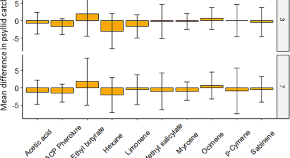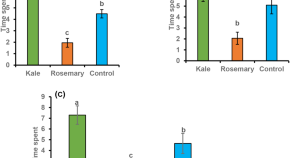Addition of Selected Plant-Derived Semiochemicals to Yellow Sticky Traps Does Not Improve Citrus Psyllid Captures
Authors (first, second and last of 5)

Collection
Africa continues to experience the world’s fastest population growth rates, that is expected to double from the current population of about 1.3 billion people to 2.5 billion by 2050. On the other hand, malnutrition is common in the continent with about 21% of the population facing food and nutritional insecurity, and health issues associated with vector-borne diseases. Furthermore, Africa has been ravaged by the effects of climate change rendering the continent susceptible to invasive pests and pathogens with detrimental effects on agricultural productivity and veterinary and public health. Therefore, to bridge the food demand gap, agriculture and food production systems need to be transformed using climate smart technologies. Likewise, innovative vector-control technologies are needed for improved animal and human health.
Chemical ecology has traditionally played a significant role in providing novel tools for species detection, surveillance and monitoring, and pest and disease vector suppression to counter the use of insecticides that have detrimental effects to agriculture, livestock health, human health and the environment. This special issue aims to publish original articles, reviews, and opinion papers in chemical ecology, targeting identification and application of semiochemicals, their biochemical and molecular aspects, that can be used to improve pest and disease-vector control and environmental health in Africa. We are cordially inviting researchers at all levels and keenly happy to receive contributions from early-career researchers for this special issue on chemical ecology in Africa. The submission deadline is December 2023. Please visit the journal website for more information on publications fee models and manuscript guidelines. JournalofChemicalEcology
If you are interested in contributing to this special issue, please submit your manuscript by December 15, 2023. Please note that all submitted papers will undergo the peer-review process as per the journal guidelines.
For additional information, please reach out to the Special Issue Editors:
Baldwyn Torto (btorto@icipe.org)
Fathiya Khamis (fkhamis@icipe.org)
Abdullahi Ahmed Yusuf (abdullahi.yusuf@ up.ac.za)
International Centre of Insect Physiology and Ecology (ICIPE), Kenya, btorto@icipe.org
The International Centre of Insect Physiology and Ecology (icipe), Kenya, fkhamis@icipe.org
University of Pretoria, South Africa abdullahi.yusuf@up.ac.za




